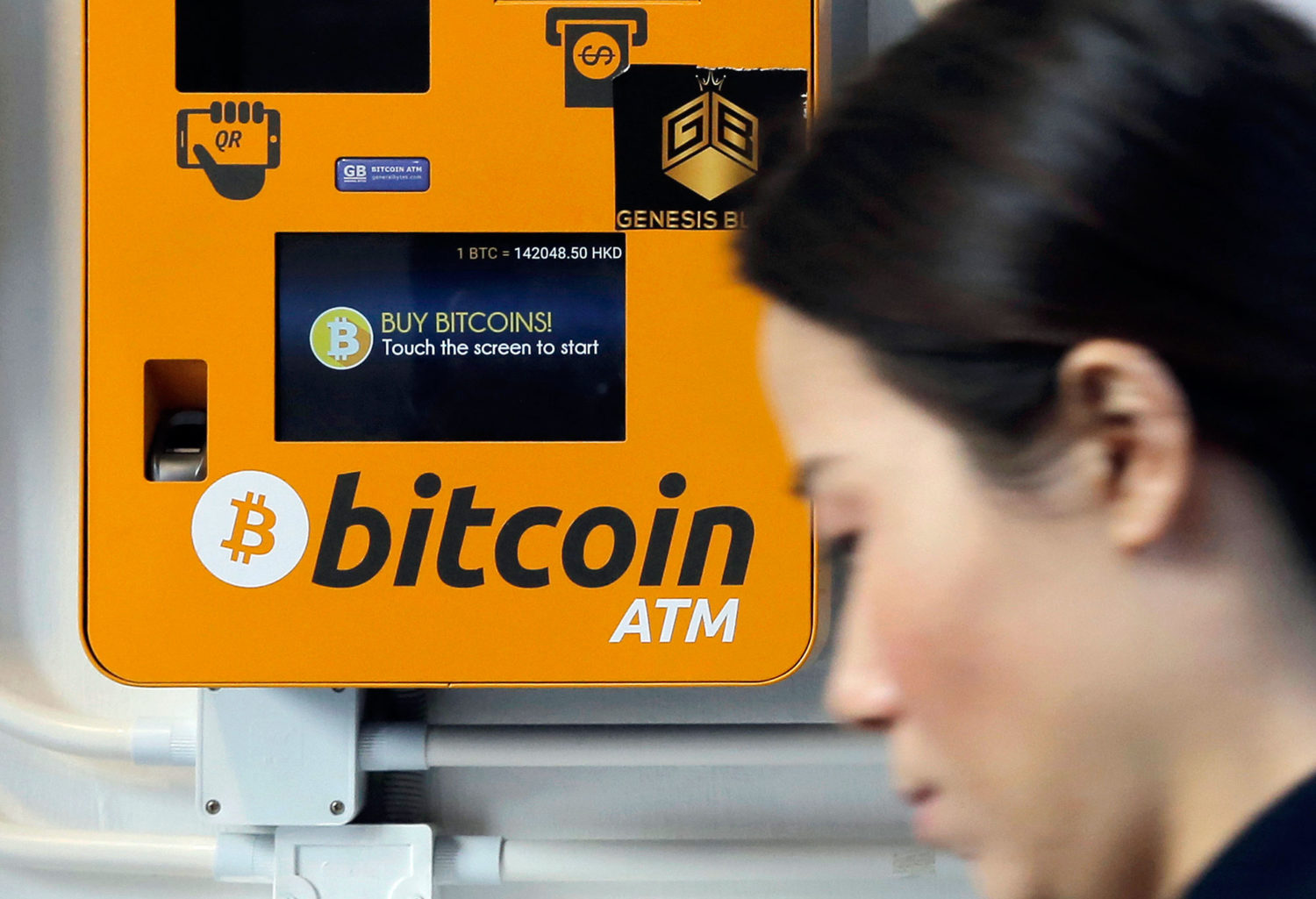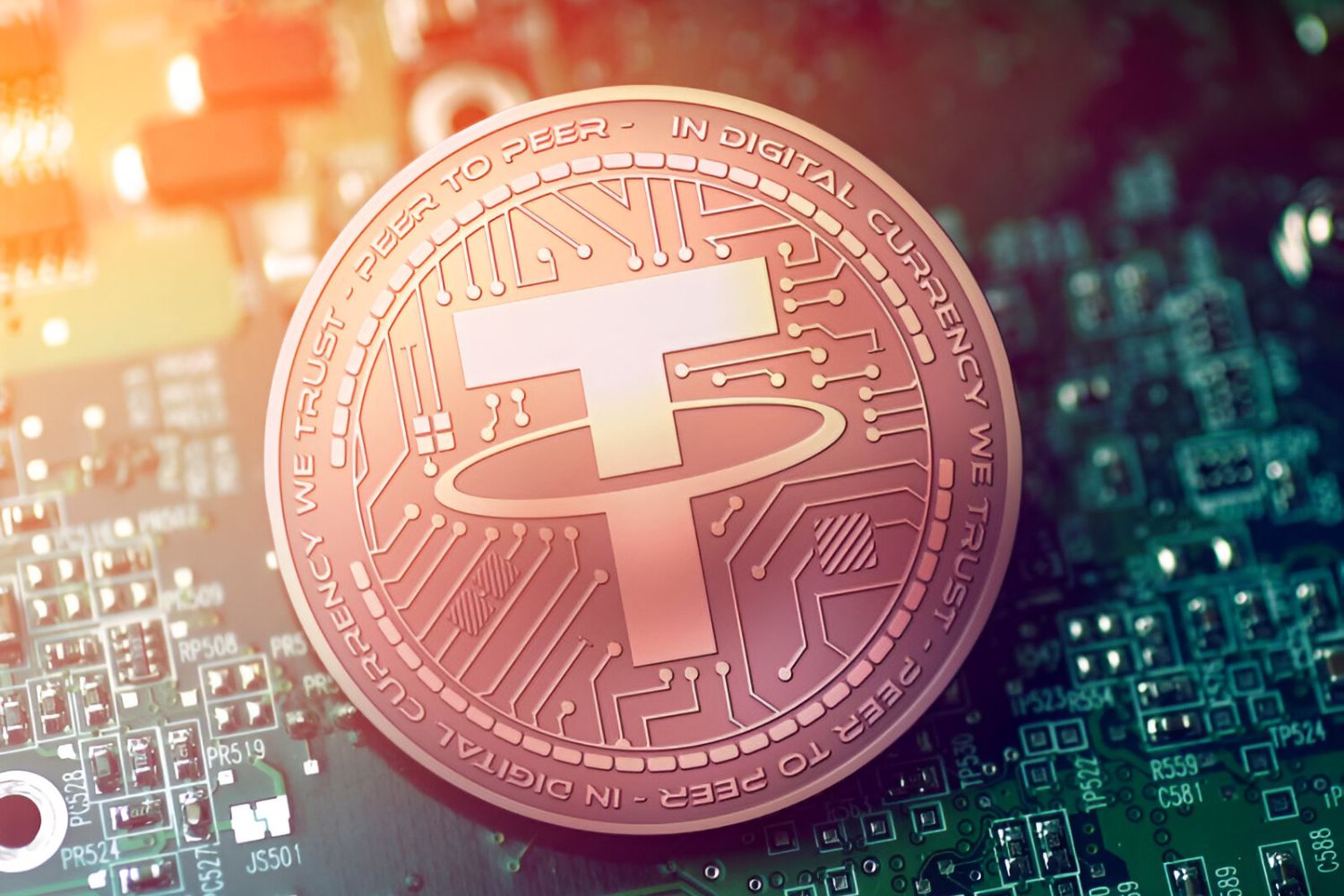Introduction
Digital currency has emerged as a significant force in the global economy, revolutionizing the way we make transactions and store value. Unlike traditional forms of currency, digital currency exists solely in electronic form, making it convenient and accessible for users around the world. However, with its growing popularity, questions arise regarding its stability and the level of trust that users can place in it. One crucial aspect of digital currency is whether it is backed by cash.
Digital currency, such as cryptocurrencies like Bitcoin or stablecoins like Tether, operates on a decentralized network, relying on advanced cryptographic technology. It offers seamless and fast transactions, reducing the need for traditional banking intermediaries. However, being exclusively digital raises concerns about its inherent value and stability.
The backing of digital currency by cash refers to its support by a reserve of real-world currency, such as the US dollar or the euro. This backing provides a measure of stability and ensures that the digital currency maintains its value and can be redeemed for its equivalent in cash, if needed. Cash-backed digital currencies offer a level of security and reliability that can enhance users’ trust and confidence in their transactions.
As digital currency gains wider acceptance, the level of cash backing becomes crucial in determining its reliability and long-term sustainability. This article will explore the extent to which digital currencies are backed by cash, the role of central banks in this process, the factors that influence the percentage of cash backing, and the potential risks associated with digital currency that is not adequately backed by cash.
What is digital currency?
Digital currency refers to an electronic form of currency that exists solely in digital or virtual form. It is not physical like traditional banknotes or coins but is instead stored and transferred electronically. Digital currency operates on decentralized networks, utilizing cryptographic technology to secure transactions, control the creation of new units, and verify the transfer of assets.
One of the most well-known forms of digital currency is cryptocurrency, with Bitcoin being the pioneer in this realm. Cryptocurrencies are created and managed using decentralized ledger technology, called blockchain, which ensures the transparency and immutability of transactions.
In addition to cryptocurrencies, there are also stablecoins, which are designed to minimize the volatility often associated with cryptocurrencies. Stablecoins are pegged to a specific underlying asset, typically a fiat currency like the US dollar or a commodity, to maintain a stable value.
Digital currency offers several advantages over traditional forms of currency. It enables faster and cheaper cross-border transactions, eliminating the need for intermediaries like banks. It provides greater accessibility to financial services, especially for the unbanked or underbanked population. Digital currency also offers increased security and privacy by utilizing encryption techniques.
However, digital currencies also have their drawbacks. The fluctuating value of cryptocurrencies can make them risky for investors and consumers alike. The potential for fraud and hacking incidents poses significant security concerns. Moreover, the lack of regulation and oversight in the digital currency space raises questions about consumer protection and financial stability.
In summary, digital currency is an electronic form of currency that operates on decentralized networks and relies on cryptographic technology. It presents various benefits and challenges, making it a topic of interest for individuals, businesses, and governments around the world.
Why is it important to be backed by cash?
The backing of digital currency by cash serves as a critical aspect of its stability and trustworthiness. Here are several reasons why this cash backing is important:
- Preservation of value: Cash backing ensures that the digital currency maintains its value over time. By having a reserve of real-world currency, digital currency can be redeemed for its equivalent in cash, providing users with confidence that their digital assets have tangible value.
- Reliability: Cash backing offers a level of reliability and reduces the risk of volatility often associated with purely digital forms of currency. Users can feel more secure knowing that their digital currency is supported by an underlying asset that has historically maintained its value.
- Consumer protection: Cash backing helps protect consumers from potential fraud or mismanagement in the digital currency ecosystem. In the event of any issues or problems, users have the assurance that they can convert their digital currency into cash, providing a safety net and recourse for potential losses.
- Wider acceptance: Cash-backed digital currencies are more likely to be accepted in mainstream commerce and everyday transactions. Businesses and individuals often prefer the stability and trust associated with currencies that have a cash backing, making it easier for users to utilize digital currency for various purposes.
- Regulatory compliance: Having cash backing can assist in complying with regulatory requirements and oversight. Many jurisdictions have financial regulations that govern the circulation and usage of currency. By backing digital currency with cash, it aligns with existing financial frameworks, making it easier to integrate into the existing legal and regulatory systems.
Overall, the cash backing of digital currency adds a layer of stability, reliability, and trust. It provides a tangible value that can be easily understood and accepted by users, businesses, and regulatory authorities. Cash backing helps to mitigate risks, protect consumers, and promote wider acceptance and compliance in the digital currency ecosystem.
How much digital currency is backed by cash?
The extent to which digital currency is backed by cash varies depending on the specific type of digital currency and its underlying structure. While some digital currencies are fully backed by cash reserves, others may only have a partial backing or no cash backing at all.
Stablecoins, which are designed to maintain a stable value, typically have a one-to-one backing with cash or another asset. For example, Tether (USDT), one of the most popular stablecoins, claims to be fully backed by US dollars. This means that for every unit of Tether in circulation, there should be an equivalent amount of US dollars held in reserve.
On the other hand, cryptocurrencies like Bitcoin do not have a direct cash backing. Their value is primarily determined by market forces of supply and demand. Instead of being backed by cash, cryptocurrencies derive value from factors such as utility, scarcity, and investor speculation.
It’s worth noting that some stablecoins and digital currencies may also adopt other mechanisms to maintain their value or provide transparency. For instance, algorithms may be employed to adjust the supply of tokens based on the demand or the value of the underlying assets.
The level of transparency and auditability of the cash backing also varies among digital currencies. Some issuers provide regular audits or reports to verify the amount of cash reserves held. Others may rely on third-party trust or smart contracts to facilitate and ensure the integrity of the cash backing process.
Additionally, central bank digital currencies (CBDCs), which are digital forms of fiat currencies issued by central banks, may have a complete cash backing since they are a direct representation of the country’s traditional currency. However, the implementation and adoption of CBDCs are still ongoing in many countries.
In summary, the percentage of cash backing for digital currency varies depending on the specific type of digital currency and its underlying structure. While stablecoins aim for full cash backing, cryptocurrencies like Bitcoin rely on other factors for their value. Central bank digital currencies may have complete cash backing, but their implementation is still in progress in many jurisdictions.
The role of central banks in backing digital currency
The backing of digital currency by central banks plays a crucial role in ensuring stability, trust, and regulatory compliance. Here are the key roles that central banks play in backing digital currencies:
- Regulatory oversight: Central banks are responsible for regulating and supervising financial systems within a country. When it comes to digital currencies, central banks establish guidelines and regulations to ensure that they are operating within the legal framework. This oversight helps protect consumers, prevent illicit activities, and maintain financial stability.
- Issuance of central bank digital currencies (CBDCs): Central banks have the authority to issue CBDCs, which are digital forms of fiat currencies. CBDCs are backed by the full faith and credit of the central bank and often have a complete cash backing. By issuing CBDCs, central banks provide a government-backed digital currency that can coexist alongside traditional forms of money.
- Management of reserves: Central banks hold reserves of cash or other assets to back digital currencies. These reserves provide a level of trust and stability to the digital currency ecosystem. Central banks carefully manage these reserves, ensuring their adequacy and liquidity to support the value and convertibility of the digital currency into cash, if required.
- Promotion of financial stability: Central banks monitor the impact of digital currencies on the overall financial system. They identify and mitigate any potential risks associated with digital currencies, including issues like price volatility, cyber threats, or systemic disruptions. By promoting financial stability, central banks aim to safeguard the integrity of the digital currency market and protect consumers.
- Collaboration and partnerships: Central banks collaborate with other financial institutions, both domestically and internationally, to ensure consistent standards and practices in backing digital currencies. They may engage in partnerships with technology firms, payment processors, or other stakeholders to enhance the efficiency, security, and interoperability of digital currency systems.
Central banks play a pivotal role in backing digital currencies by providing oversight, issuing CBDCs, managing reserves, promoting financial stability, and fostering collaboration. Their involvement instills confidence in the digital currency ecosystem and contributes to the overall trust and acceptance of these currencies in the global financial landscape.
Factors affecting the percentage of digital currency backed by cash
The percentage of digital currency backed by cash can vary based on a combination of factors that influence the design, purpose, and governance of the specific digital currency. Here are some of the key factors that affect the level of cash backing:
- Type of digital currency: The type of digital currency itself plays a significant role in determining the extent of cash backing. Stablecoins, which aim to maintain a stable value, typically have a full or near-full cash backing. Cryptocurrencies, on the other hand, usually do not have direct cash backing as their value is determined by market forces.
- Regulatory environment: The regulatory environment in which digital currencies operate can impact the level of cash backing. Some jurisdictions may require a certain level of cash backing as part of their regulations to ensure stability and consumer protection. Conversely, more relaxed or ambiguous regulatory frameworks may allow for lower or no cash backing.
- Issuer’s transparency and credibility: The transparency and credibility of the issuer can also influence the level of cash backing. Issuers that provide regular audits or public reports on their cash reserves create a higher level of trust and confidence among users. Conversely, issuers with limited transparency or credibility may face skepticism, affecting the perceived level of cash backing.
- Market demand and acceptance: The market demand and acceptance of the digital currency can impact the level of cash backing. Higher demand and wider acceptance may incentivize issuers to increase the cash backing to enhance trust and attract more users. Conversely, if demand is low or the currency struggles to gain acceptance, the issuer may allocate fewer resources for cash backing.
- Economic stability and volatility: The economic stability and volatility of the underlying currency can impact the level of cash backing for digital currencies. In countries with stable economies and currencies, issuers may find it easier to maintain a higher level of cash backing. In contrast, in regions with high currency volatility or economic uncertainty, the level of cash backing may be more challenging to maintain.
It’s important to note that the percentage of cash backing can also evolve over time as the digital currency ecosystem matures, regulations evolve, and market dynamics change. Innovation and advancements in technology, such as the use of smart contracts or decentralized finance, can also impact the level of cash backing in digital currencies.
Overall, the level of cash backing in digital currencies is influenced by factors such as the type of digital currency, regulatory environment, issuer transparency, market demand, economic stability, and volatility. These factors interact and shape the degree to which digital currencies are backed by cash, contributing to their stability, trustworthiness, and acceptance.
Potential risks of digital currency not backed by cash
The absence or inadequate cash backing in digital currency can pose several risks to users, the financial system, and the overall economy. Here are some of the potential risks:
- Volatility: Without cash backing, digital currencies can be highly volatile, subject to rapid price fluctuations based on market sentiment and speculation. This volatility can result in significant financial losses for users and hinder the mainstream adoption of digital currencies.
- Lack of stability: The absence of cash backing can undermine the stability of digital currencies. In times of economic crisis or market downturn, users may lose confidence in digital currencies that have no tangible backing, potentially leading to a loss of value and widespread panic.
- Counterparty risk: Digital currencies not backed by cash can expose users to counterparty risks. Users rely on the integrity and solvency of the issuer to honor their obligations. If the issuer defaults or faces financial difficulties, users may face significant losses with little to no recourse.
- Loss of trust: Inadequate cash backing can erode trust in digital currencies and the broader ecosystem. Users may doubt the true value and stability of digital currencies, making them hesitant to participate in transactions or hold digital assets, leading to a lack of market confidence and adoption.
- Increased fraud and scams: The absence of cash backing can create fertile ground for fraudulent activities and scams in the digital currency space. Illegitimate issuers may exploit the lack of accountability and transparency to deceive users and manipulate the value of the digital currency for personal gain.
- Systemic risks: If a significant portion of the digital currency market lacks cash backing, it could pose systemic risks to the broader financial system. Confidence in the stability and value of digital currencies can directly impact the perception of financial stability, affecting investor confidence and potentially triggering wider economic repercussions.
It is important to note that these risks can be mitigated with proper regulation, improved transparency, and robust risk management practices. Regulatory oversight, regular audits, and adherence to best practices can help address some of the potential risks associated with digital currencies not backed by cash.
While digital currencies offer numerous benefits and opportunities, the absence of cash backing poses substantial risks that need to be addressed to ensure the long-term viability and trustworthiness of the digital currency ecosystem.
The debate on the future of cash-backed digital currency
The future of cash-backed digital currency is a subject of ongoing debate among economists, policymakers, and technology enthusiasts. While some argue for the continued importance of cash backing, others see potential for alternative models. Here are some key points in the debate:
- Stability versus innovation: Proponents of cash-backed digital currency argue that cash backing provides stability and confidence in the value of the currency. They believe that the tangibility and connection to real-world assets help mitigate volatility and provide a reliable medium of exchange. On the other hand, advocates for alternative models argue that technology-driven innovations, such as decentralized finance and algorithmic stablecoins, can achieve stability without the need for full cash backing.
- Regulatory oversight: Cash-backed digital currencies are seen by some as more aligned with existing regulatory frameworks. Cash backing allows for easier integration into financial systems and compliance with existing regulations. However, supporters of alternative models argue that technological solutions can facilitate regulatory oversight and address concerns related to consumer protection, transparency, and financial stability.
- Financial inclusion: Cash-backed digital currencies can play a vital role in promoting financial inclusion by providing a bridge between traditional financial systems and emerging digital technologies. Cash-backed models offer a familiar and accessible entry point for individuals who have limited access to formal banking services. Advocates of alternative models believe that new technologies can also enhance financial inclusion by providing efficient and low-cost solutions for underserved populations.
- Technological challenges: While cash-backed digital currencies have the advantage of familiarity and simplicity, they may face technological limitations. Traditional cash-backed models may require intermediaries and face scalability issues as transaction volumes increase. Alternative models leveraging blockchain technology and smart contracts offer the potential for greater efficiency and scalability but also face challenges related to technological infrastructure and adoption.
- Central bank’s role: The role of central banks in backing digital currencies is a subject of debate. Some argue that central bank-issued digital currencies, fully backed by cash reserves, could offer the best of both worlds – the stability of cash backing and the benefits of digital technology. Others argue that decentralized cryptocurrencies and stablecoins can operate independently of central bank control, enabling innovation and reducing potential risks associated with centralized authority.
The debate surrounding the future of cash-backed digital currency is complex and multifaceted. It involves considerations of stability, regulatory oversight, financial inclusion, technological feasibility, and the role of central banks. Ultimately, the future direction will depend on a balance between stability and innovation, societal needs, regulatory frameworks, and technological advancements.
Conclusion
The backing of digital currency by cash is a crucial aspect that impacts its stability, trustworthiness, and acceptance. While some digital currencies, such as stablecoins, strive for full cash backing, others, like cryptocurrencies, rely on alternative mechanisms to determine their value. Central banks play a vital role in backing digital currencies, through regulatory oversight, issuance of central bank digital currencies (CBDCs), and management of reserves.
The percentage of digital currency backed by cash varies based on factors such as the type of digital currency, regulatory environment, issuer transparency, market demand, and economic stability. The absence or inadequate cash backing poses risks, including volatility, lack of stability, counterparty risk, loss of trust, increased fraud, and potential systemic risks.
The future of cash-backed digital currency is the subject of ongoing debate. Proponents argue for the stability and familiarity provided by cash backing, while others advocate for alternative models utilizing technology innovations. The role of central banks in backing digital currency and the potential for CBDCs are also points of contention.
In conclusion, the level of cash backing in digital currency is an important consideration for its stability and trust. While different types of digital currencies have varying levels of cash backing, the evolving landscape and technological advancements continue to shape the future of cash-backed digital currencies.

























